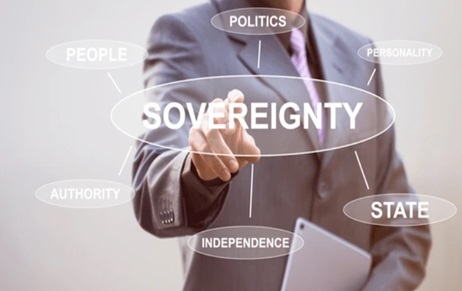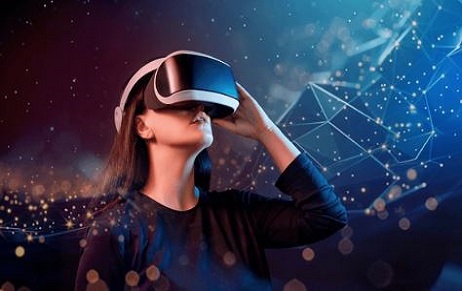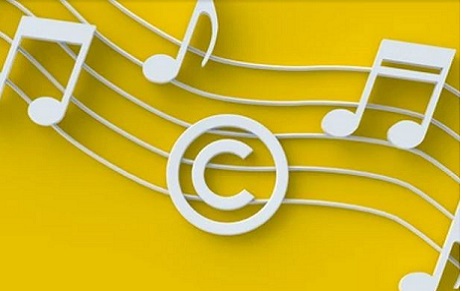Bodin argued that sovereignty is indivisible and absolute and that it should be concentrated in…
Sarine Technologies Ltd v. Divora Bhandari Corporation & Ors
When it comes to one of the most contentious aspects of copyright law in software, two things come to our mind:
- The idea-expression dichotomy and;
- Which part of software is copyrightable, and which part is patentable.
The present case of Sarine Technologies Ltd. v. Divora Bhandari Corporation &orsunfolds many perplexing facts of the copyright Law.
The Plaintiff is an Israeli company established in 1988 that is engaged with the business of providing diamond dealers/ merchants with the best in class equipment and services for mapping, processing, and trade of diamonds and other gemstones.They developed“Advisor” software that generates an optical planning and polishing plan so that maximum value can be derived from rough stone in furtherance of its business.
The plaintiff claimed their copyright ownership on the software “Advisor”, stating that computer program comes under the domain of copyright, and therefore the same is claimed under copyright ownership on the ‘sixth version of the Advisor software’ in the USA and Israel through registration and common law respectively. They claimed the same in India as well. Further, they asserted that Defendants illegally use their Advisor software, and have also ‘developed pirated software copy’ in the name of “Mandakini- Work Manager”, leading to their unjust enrichment, and hence the defendants are liable under section 51 of the Copyright act, 1957.
On the other hand, Defendants are engaged in the business for four years for providing scanning services to diamond merchant, and also provide such scanning machines for sale to its customers. For this purpose, they have developed software namely ‘Mandakini- Work Manager’ without any reference to the plaintiff’s software.
The suit was originally filed in the district court of Surat for infringement by the defendants under sections 51 r/w 55, 58,63 and 63B of Copyright Act, 1957, where the permanent injunction restraining the defendants to engage with the copyrighted software and damages prayed by the plaintiffs which were enhanced to INR 50 Crores due to which it was transferred to Commercial court in consonance with the pecuniary jurisdiction.Further, plaintiffs filed an “Interim Injunction Application” under Order XXXIX Rules 1 and 2 of the Code of Civil Procedure, 1908 seeking an ex parte ad interim injunction restraining the defendants from using, distributing, selling, offering for sale any inclusion scanning services which is claimed to have been infringed by the defendants.
There were few questions that were answered in the proceedings of the case:
- How has the plaintiff claimed its copyright protection in India when neither it is first published nor it is registered in India?
Plaintiff has copyright ownership on the ‘Avisor software version 6.0’ in Israel, as it was first published in the country and they claimed copyright in the USA through copyright registration according to Title 17 of US copyright Act.[1] Both these countries are party to the Berne Convention and so is India. By virtue of being signatory to the Berne Convention, the plaintiff can claim their copyright ownership on the said software.[2]In addition to this, section 40 of the Copyright Act, 1957 enables the plaintiff to copyright protection in India as it extends protection to the foreign works.
The defendants alleged that there is no evidence as to whether the software is being developed by the employees in ‘contract of service’ or ‘contract for service’. To this, the plaintiff put forth that where the work is developed in course of the author’s employment, under contract of service or apprenticeship, the employer shall be the first owner of the work of copyright, in absence of any agreement to the contrary.[3] Further, plaintiffs cleared that although they have copyright in version 6 of their software, due to this reason, they have copyright in all derivative works which include previous versions of the computer programme as well.[4]
- Whether the software is copyrightable or not?
Going by the statutory provisions, section 2 (o) of the copyright Act, 1957, computer program is included in the definition of ‘literary work’ but not software per se. Further, section 2 (ffc) defines computer programs as set of instructions expressed in words, codes, schemes or in any other form including machine readable medium, capable of causing a computer to perform a particular task or achieve a particular result. This principle was also supported in SAS Institute Inc v World Programming Ltd[5], where the EU court of justice, by referring to the Software directives held that expression of ideas in form of source code/ object code is protected under the copyright law and not the ideas in form of functionality.In the present case, the plaintiff claimed that they have copyright over their software in the USA through its registration under statutory provisions[6] and in Israel through common law.
Consequently, another question arose pertained to where the functionality aspect of the software falls? The plaintiff claimed that their software was the only software that could scan the diamond for marking the edges to be cut by the diamond cutters in the diamond industries. Additionally, they stated that in order to provide inclusion scanning services, Defendants have ‘developed pirated software’ and prayed for injunction referring to Microsoft Corporation v. Vijay Kaushik, where the court granted an injunction on account that the defendants had pirated the plaintiffs software.The plaintiff had also submitted few evidences in sealed envelope under section 151 of CPC, 1908, requesting the court to not to disclose the same to the Defendants. This was refuted by the Defendants stating that this is against the natural justice not to show the evidences on which certain allegations are made out on the Defendants. It was further argued by the Defendants that development of software cannot be referred to as ‘piracy’ as Piracy pertains to use of an unlicensed software or use under an invalid license, and therefore reference to the term “developed a pirated software” is technically incorrect, and demonstrates Plaintiffs’ incorrect understanding of how software works and where Copyright subsists in the software. In the present case, the Defendant independently developed their own software by using their own intellect and therefore the source code of the Defendants’ software is completely different from that of the Plaintiff, which scans the diamonds as to show edges of diamond which are to be cut and polished. Therefore, although functionality of Gal Manager of Plaintiff may be overlapping with Work Manager of the Defendant, the implementation/source code/object code is completely different, which is a clear indicator of non-infringement on the copyright of the Defendant. Moreover, law of copyright does not protect ideas/functionality and instead only gives protection to the particular/specific expression of ideas.[7] Defendants also claimed that they used Advisor software (version 4.7) only by acquiring licence, and that the same was clearly stated in the report of the Local Commissioner. Thus, the defendants cannot be held liable for infringement of copyright.
Lastly, Plaintiffs claimed that results generated by the Defendant’s software are deceptively similar to theirs by relying on reports of Private Investigator appointed by them. The report stated that the output result of the scanned diamond through the Defendant’s software was the same as that of the plaintiff’s output result of Advisor software.The Defendants averred that this appointment of private investigator is flawed as no procedure of law was followed and thus, the veracity of the report cannot be relied upon. However, by looking at the plaintiff’s claim comprehensively, the Plaintiff only focussed on the output results/functionality of the defendant’s software, which does not determine copyright infringement. Neither did the Plaintiff disclose any source/object code that it claims to have been infringed by the Defendants, nor did it demonstrate any similarity in the source/object code by comparing it with the Work Manager software of the Defendants. Moreover, source code can be written in different ways to perform similar function, which need not infringe any copyright of others. This is the rationale behind computer program coming under the ambit of ‘literary work’ for Copyright protection. Like so, the Defendant has independently developed software‘Mandakini- work manager’ that provides a similar file with different codes without any infringement.Defendants agreed that they are using advisor software version 4.7 but only licensed version of said software, which was clearly evidenced in the report of Local commissioner who was appointed by the High Court of Gujarat to investigate defendant’s premises on 28th June, 2017. This was initially prayed by the plaintiff under order XXVI Rule 9 and 10 of the Civil Procedure Code,1908, before the district court which was denied. However, it was successfully appealed in the High Court.
Further in support of their contention, Defendants referred to SAS Institute Inc v World Programming Ltd[8] where the Chancery court, by referring to the software directives, held that “only the expression of a computer program is protected and …ideas and principles which underlie any element of a computer program…are not protected by copyright.’[9]It was upheld by the Court of appeal. The applicability of this case was questioned by the plaintiff as the referred directive was repealed and also that the software directives are based on local European Laws. But in the present case the Hon’ble court confirmed that new directives[10] are in consonance with the Berne Convention and clearly mention the above held decision by the Chancery Court, hence affirmed the applicability of the said case.
The court raised its concern over the fact that the plaint was silent on comparison of the source code and object code of both the software- ‘Advisor’ and ‘Mandakini- work manager’. The plaint has only focussed on functional aspect of the software mentioning that the extension files generated by plaintiff’s as well as defendant’s software is same, which is subject matter of patent and not copyright. The court highlighted the principle that expression of idea is protected under the copyright law and not the ideas[11].Protection to ideas extends only to the protection granted by Patents. The court referred to Lotus Development Corporation v. Borland International Inc[12], where the United States Supreme Court had upheld that only the object code and source code is protected under copyright and not the operating and application software. The court tested the three step process called Abstraction-Filtration-Comparison Test which would determine the non literal elements of software that are protected by Software.[13] The court did not find any incriminatory results that prove defendants wrong. Lastly, the court relied upon the reports of Local commissioner, who was appointed to inspect the defendant’s premises, where they did not find any infringing material. Hence on considering three issues, i.e. a) whether the matter is a prima- facie case of copyright infringement, b) where do the balance of convenience lie and; c) whether the plaintiff has suffered an irreparable loss. The court declared that the plaintiff could not proof the validity of the suit filed by them, hence no prima-facie case could be established and therefore, the Hon’ble court dismissed the petition.
Therefore, it is clear from the present case that the Court has firmly quoted that copyright does not protect ideas but only the expression of those ideas. The court made it clear in case of computer programs that only the expression of a computer program is protected, and ideas/principles that underlie any element of a computer program are not protected by copyright. Accordingly, the court dismissed the petition.
[1] Section 101 : Definition of Computer Program; Section 102: subject matter of copyright.
[2]Article 1, Berne Convention For Protection Of Literary and Artistic Works: The countries to which this Convention applies constitute a Union for the protection of the rights of authors in their literary and artistic works.
[3]Section 17, proviso (c)
[4]Aspen Tech.,Inc. V. M3 Tech., Inc.
[5][2012] E.C.D.R. 22
[6]Title 17 of the United States Code
[7]Mishra BandhuKaryalay&Ors v. Shiv RatanlalKoshal, AIR 1970 MadhPra 261
[8][2012] E.C.D.R. 22
[9]SAS Institute Inc v World Programming Limited; [2013] EWCA Civ 1482
[10]Directives 2009/24/EC
[11]R.G Anand v. Delux Films &ors, AIR 1978 SC 1613)
[12] Lotus Dev. Corp. v. Borland Int’l, 49 F.3d 807, 1995 U.S. App.
[13]Computer Associates International, Inc. V. Altai, Inc. 982 F. 2d 693(2nd Circuit, 1992)



